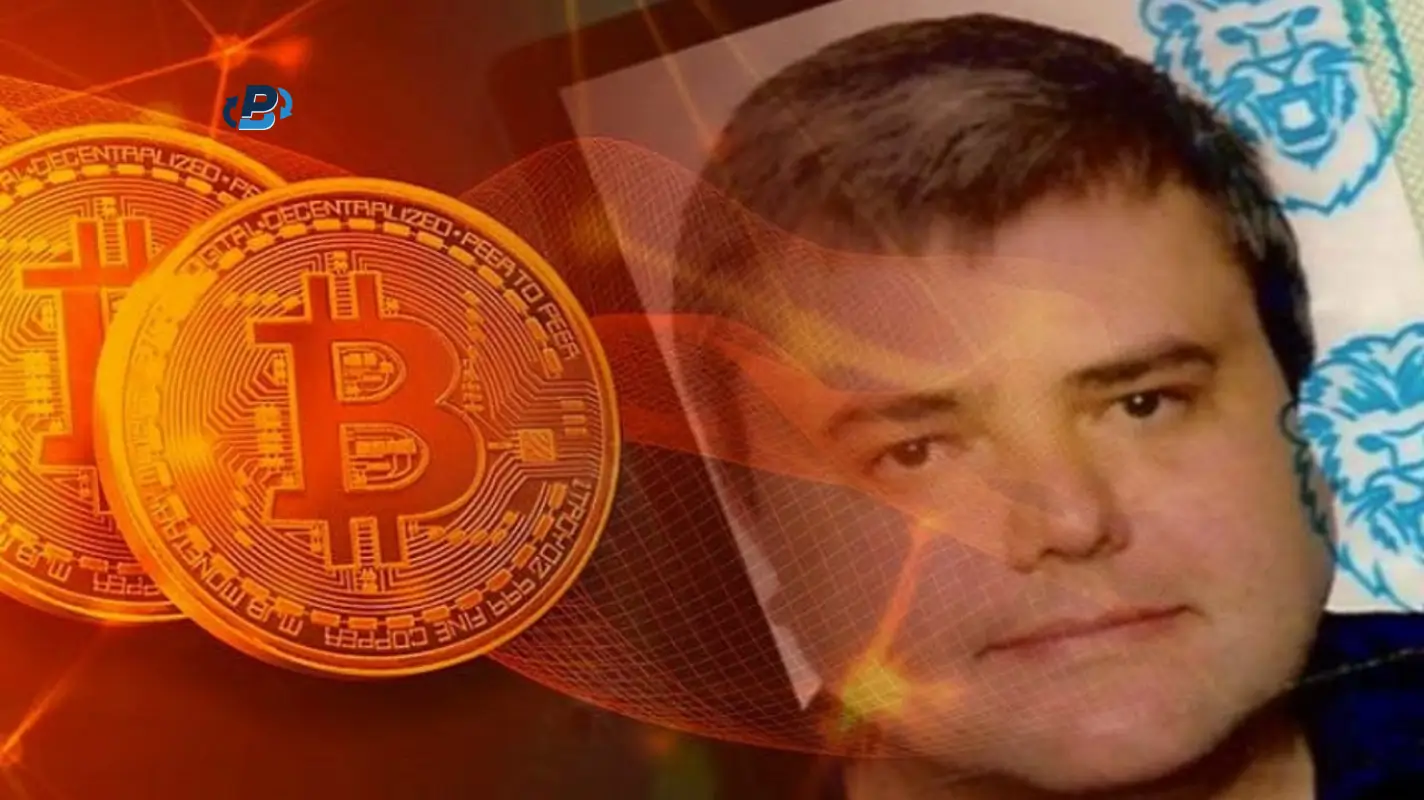The origins of Bitcoin, the flagship cryptocurrency that forever changed the financial landscape, remain one of the biggest mysteries in the tech world, and one that intrigues us here at PlasBit. While we know how it works and the way it has revolutionized finance, the true identity of its creator is still unknown.
Over the years, countless theories have emerged as to who the mysterious Satoshi Nakamoto really is, with various individuals being named as potential candidates. One of the most intriguing names in this speculation is Paul Le Roux Bitcoin, who allegedly invented Bitcoin as a convenient way for laundering and hiding the millions he made from running his criminal enterprise. More similarities include his extensive background in cryptography and C++, as well as the development of E4M, an encryption program that shares code with TrueCrypt, the software securing Satoshi’s Bitcoin wallet. Additionally, one of Paul’s aliases, “Solotshi,” closely resembles “Satoshi,” and his arrest in 2012 coincides with Nakamoto’s disappearance. The former programmer-turned-kingpin is currently serving a sentence of 25 years in prison after he moved from operating a semi-legitimate online pharmacy network RX Limited, to activities like drug trafficking, arms smuggling, and money laundering.
At PlasBit, we love investigating stories like these (which is why we also wrote about people like Rui Sian Lin). This is why we’re exposing Le Roux’s life - criminal past, prison present, and plans for the future, as well as the arguments in support and against the theory that he is actually Satoshi Nakamoto.
Theory: Paul Le Roux as Satoshi Nakamoto
The theory that Paul Le Roux Bitcoin could be Satoshi Nakamoto has gained traction among some Bitcoin enthusiasts. Le Roux’s background in cryptography and coding, particularly his work on the E4M encryption software, aligns closely with the technical expertise required to create Bitcoin. E4M, which stands for “Encryption for the Masses,” was a precursor to TrueCrypt, and has similarities with encryption methods in Bitcoin’s early days. Furthermore, Le Roux’s alias “Solotshi” sounds remarkably close to “Satoshi,” leading some to believe that this was a hint to his true identity. The timing of his arrest, in 2012, also generally coincides with Nakamoto’s last known activity, who disappeared from the public eye around the same time (in 2011), saying he had “moved on to other things.”
This has led to speculation that Le Roux’s incarceration could explain why the BTC attributed to Satoshi has remained untouched. Then, there’s the fact that he was a regular contributor to the Cypherpunk mailing list and used a mixture of American and British English, which was also very similar to Nakamoto’s language style. Finally, his criminal activity gave him the perfect motive to create a decentralized and untraceable digital currency where he could remain entirely anonymous and away from the authorities. In April 2019, Craig Wright, a computer scientist and businessman claiming to be the essential part of the team that created Bitcoin and the identity behind Nakamoto, was asked to provide evidence linked to a court case. A lot of it was linked to the creation of Bitcoin and the first instances of mining. But his lawyer (or whoever did the redacting) failed to blackout Le Roux’s name in the footnotes of the redacted Document 187 where Wright described his involvement in bringing down a crime boss. This indicates that Le Roux may be one of the criminals Wright was fearing repercussions from and requested protection against.
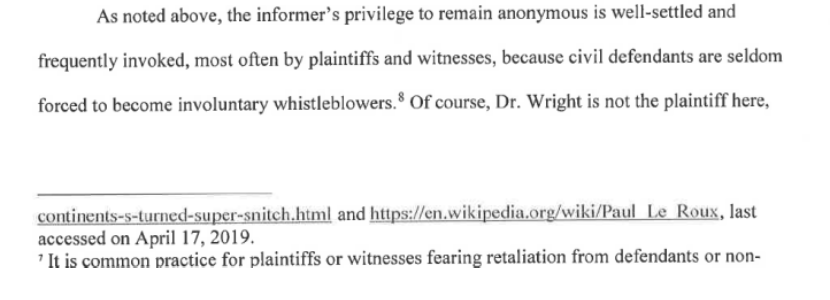
Paul Le Roux’s name and Wikipedia link in Document 187 of the Kleiman v. Wright lawsuit. (Image source: CourtListener)
Moreover, Paul had demonstrated an interest in gambling, and Bitcoin’s initial code included a poker client. On top of that, a Congolese passport emerged (among the many Le Roux reportedly owned) that lists the name “Paul Solotshi Calder Le Roux.”
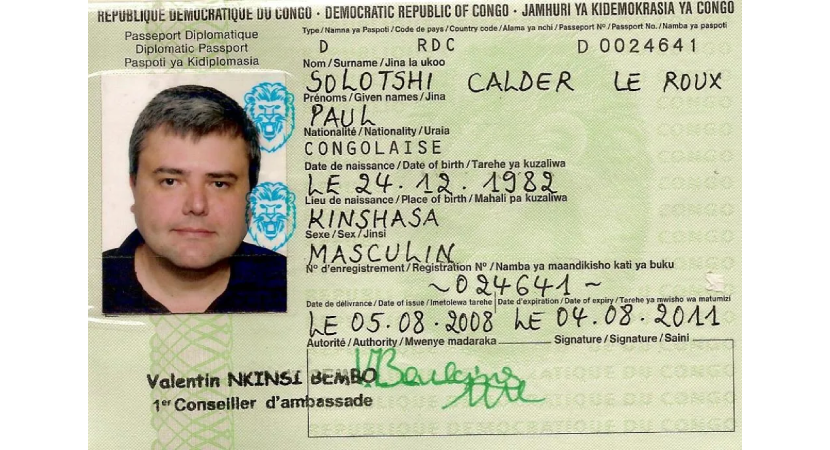
Paul Le Roux’s alleged Congolese passport (Image source: Atavist)
Another strange coincidence is a forum post from 2002, seven years before Bitcoin was released, which describes something that sounds awfully like an early idea of Bitcoin, although the connection with Le Roux is unclear (the user was only identified as ‘x’). The most interesting part, however, is that the author’s IP address was allegedly traced to the Netherlands, where Le Roux is known to have once lived, adding to the speculation that this might be one more proof of his link to Bitcoin.
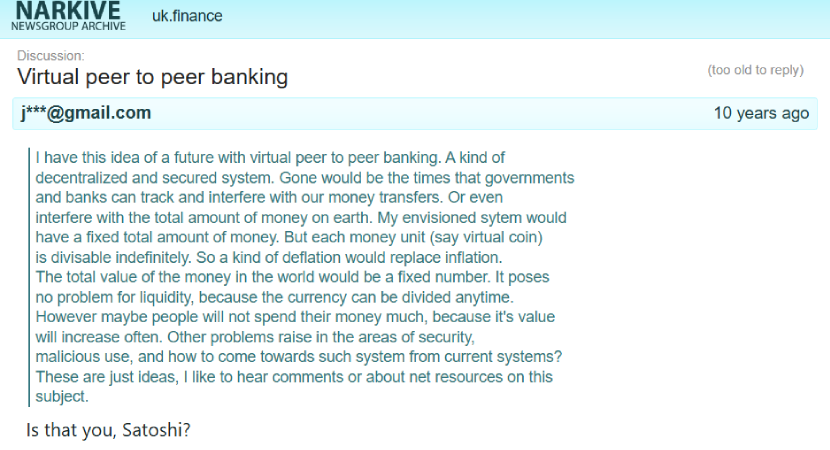
An old forum post from 2022 (Image credit: Narkive)
On the other hand, there are arguments against the “Paul Le Roux Bitcoin creator” theory. Critics point out that there is no concrete proof linking him directly to the maiden crypto asset’s creation. They argue that the decentralized and altruistic nature of Bitcoin, which PlasBit cherishes as well (e.g. the Bitcoin white paper mentions the word “honest” about 15 times), contrasts with Le Roux’s known criminal activities, which were primarily self-serving. According to a comment by Reddit user u/Emc2me, who replied to a thread suggesting that Le Roux could be Satoshi, Paul simply wouldn’t have had enough time to develop Bitcoin, considering his vast and complicated criminal empire. Specifically: “Le Roux was so insanely busy prior to 2009 with numerous drug deals, international scale operations and online selling of drug prescription scams, and running from one country to the next,” that there is NO WAY he had any time whatsoever to develop from scratch, the concept, code, and system behind blockchain which would have take years if not decades of dedicated research and in-depth studying, rather than running away from law enforcement and orchestrating complicated international drug deals.”
Instead, this commenter also expressed belief that Dave Kleiman, a noted American computer forensics expert who died in 2013, might have been the real Satoshi. As proof, he mentioned his background, credentials, certifications, and interests. An especially interesting detail is that Wright claimed that he and Kleiman together invented Bitcoin. Regardless, the two were business partners and long-time friends until Kleiman’s death. Per the above thread’s author, u/chiamalogio, Kleiman and Wright might have managed to get their hands on Le Roux’s encrypted hard drives that held 1 million BTC (if he is really Nakamoto), but all of them are locked away in secure TrueCrypt volumes (which some credit Paul for developing). In February 2018, Dave’s brother Ira initiated the above lawsuit on behalf of the Kleiman estate against Wright over the rights to between 550,000 and 1,100,000 BTC, claiming Wright defrauded the estate of the said BTC. In 2024, a London court declared that Wright was not Satoshi Nakamoto, did not author the Bitcoin white paper, nor did he write the Bitcoin software.
Who is Paul Le Roux?
Born in Bulawayo, Rhodesia (now Zimbabwe) on December 24, 1972, Paul Le Roux later moved to South Africa, where he developed an interest in computers and programming. He initially worked as a software engineer, gaining expertise in cryptography and cybersecurity. According to “Mastermind,” Evan Ratliff’s book about Le Roux, in 1994, he lived and worked in London, where he met an Australian woman named Michelle and they started dating. A year later, he followed her to Sydney where they got married. In Australia, he picked up a variety of contract programming jobs and gigs that gave him a window into the increasingly digital world of corporate banking. Shortly after his move, an Australian bank hired him to develop “credit process automation” and implement software to simplify the SWIFT system for international bank transfers. He also built accounting systems for a travel software company and automated the paperwork associated with trading for a Hong Kong brokerage.
In 1999, he announced the launch of E4M, an open-source disk encryption platform, to the Cypherpunk mailing list, demonstrating his skills in both encryption and computer networking. The software was written in C++, the programming language behind the Bitcoin protocol. Many also believe that he went on to create the open-source TrueCrypt, which is based on E4M’s code, in 2004. Meanwhile, that same year, he founded RX Limited, an online pharmacy network that operated in a legal grey area, selling prescription drugs without proper authorization. Over time, Le Roux graduated into drug trafficking, arms smuggling, and money laundering. He even started working with regimes like the Iranian government, who commissioned him in 2010 to assemble a team of engineers to develop a weapons program for the nation. His criminal empire became quite impressive, employing mercenaries and establishing operations across multiple countries on four continents. But as the wisdom of the proverbs says that all things come to an end and crime doesn’t pay - the US government caught wind of his activities.
In fact, they were on him since his RX Limited days, with US Drug Enforcement Administration (DEA) agents picking up the company’s trail in the Twin Cities (Minneapolis - Saint Paul metropolitan area). They followed the breadcrumbs to a Chicago pharmacy that had been filling orders for the website’s customers. Searching its premises, they discovered the company’s name plastered all over the piles of FedEx packages scheduled for delivery. Basically, RX Limited had a collection of websites, a national account with FedEx, and millions of customers around the world to whom they would sell prescription drugs without any doctor-patient relationship.
It wasn’t long before the authorities figured Le Roux was up to something far more sinister than selling prescription-based painkillers. Their suspicions culminated with phone calls to Somalia that caught the DEA’s attention in 2009 alongside a cargo ship purchase in Turkey by a company owned by Le Roux. Turns out, the ship sailed around Africa to Indonesia, where it picked up crates of high-powered assault rifles and pistols bound for the Philippines. Before customs officials managed to raid the ship, its British captain Bruce Jones escaped, only to later turn himself in and seek witness protection. Be that as it may, he was gunned down by assassins on motorbikes a year later north of Manila. After unsuccessful attempts to find Le Roux’s whereabouts, the agents came across a UN Security Council Report in 2011, shedding light on where he had been. The report linked him to arming a Somali militia through his Hong Kong-based company Southern Ace Ltd. with a massive load of weapons and ammunition, including an anti-aircraft machine gun, no less. (Who is this guy, Nicolas Cage in Lord of War?) But upon discovering he was unwittingly overpaying his militiamen, Le Roux left Somalia in early 2011, only for investigators to spot him in Brazil a year later. As US authorities were closing in on him, Le Roux seemed to have noticed someone on his tail. So, he took up temporary residence in Rio de Janeiro and planned his permanent move there.
According to Brazilian news reports, he set up a front company there for his drug business. He also had a Brazilian mistress in Rio, with whom he had a son, in addition to having his Filipino wife Cindy Cayanan (although on immigration forms he was still married to Lilian Cheung Yuen Pui, a Dutch citizen) give birth there, thus being protected from extradition under Brazilian law. Nonetheless, the DEA worked with Brazilian authorities to get an “informal” wiretap on Le Roux's phone without a warrant and heard him argue with his ex-wife (that’s Lilian Cheung Yuen Pui in case you’re already lost here), telling her to stop buying property in the Netherlands as the government would seize it all. His imperium eventually came crashing down when he was arrested in 2012 in a DEA sting operation in Liberia. And it was a silly mistake really, as they lured him out from the safety of Brazil under the pretense of a lucrative meth-chemicals-for-cocaine deal. Indeed, his insatiable appetite for money (and crime habit) made Le Roux throw caution down the wind as he jumped at the opportunity without a second thought. He bought a ticket to Monrovia and arrived on September 25 - the beginning of his end.
Paul Le Roux Dave Smith death
It should also be noted that Le Roux liked to keep things tight in his immediate surroundings, punishing what he considered disloyalty and treason with shockingly harsh penalties (someone would even view them as retribution). An especially dark and treacherous segment of his past (as if trying to be a Somalian warlord isn’t bad enough) involves the details surrounding Paul Le Roux Dave Smith, Dave was Le Roux’s head of security who oversaw the recruitment of mercenaries, managed bribes, drug shipments, and arms deals, overall ensuring the smooth operation of Le Roux’s criminal empire. However, he was executed on Le Roux’s orders in 2011 after he was caught stealing money from his boss. According to one source, Smith was kidnapped outside a bar while drunk, shot, and buried in a shallow grave.
Another source said Smith was thrown off a boat and shot, with Le Roux himself firing some of the shots from a .45. On September 26, 2012, Paul Le Roux was sitting in a hotel room in Monrovia, Liberia, organizing a large drug deal with the head of a Colombian cartel, and boasting the two ways in which he kept his criminal endeavor in line. First, he had zero tolerance for stealing, he said, which is why he had his top lieutenant killed. The second was ensuring that employees never ratted on him or his business. Supposedly, he would tell them: “You get caught doing anything, remember: You keep your mouth shut.” For those who freaked out in prison and considered telling on him, the message was: “What’s going to happen when you get out, you make the deal? You think we’re going to forget about you?”
The Capture and Trial of Paul Le Roux
As Alanis Morissette would say, “Life has a funny way of sneaking up on you,” and Le Roux soon got his chance to put his philosophy to the test (and failed miserably). He was arrested that same day by the Liberian police (which he then tried to bribe, of course) and handed over to the DEA agents. Le Roux’s capture was the result of a lengthy investigation by the DEA, culminating in a sting operation in Liberia. Posing as members of a Colombian drug cartel, DEA agents lured Le Roux into a methamphetamine deal, ultimately leading to his arrest (which he resisted by making himself as heavy as possible). Instead of keeping his mouth shut like he demanded his employees to do, Le Roux totally chickened out. By the time the DEA’s plane carrying him was over the Atlantic headed for New York, he already waived his Miranda rights and was asking how he and the government could work something out.
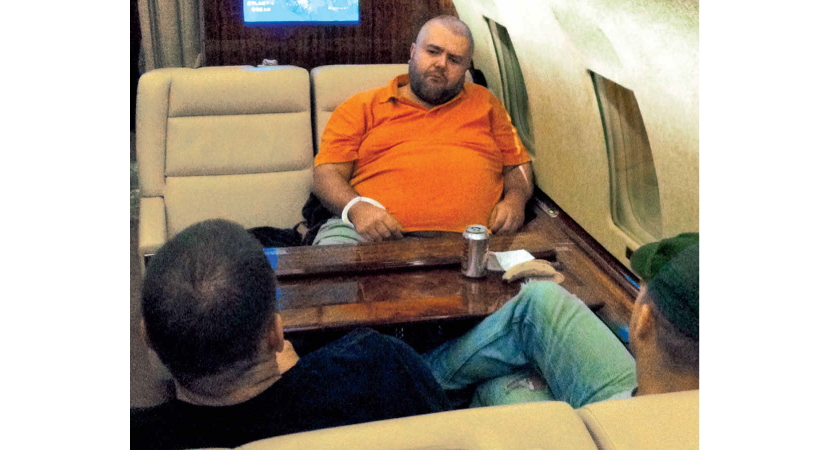
Paul Le Roux under arrest during his extradition to New York (Image credit: Wikimedia Commons)
Paul Le Roux Sentence
And that’s more-or-less the exciting (or not) story of his arrest. Fast-forward to more than seven years later - which was the length of Le Roux trial for all the counts of the lawsuit against him - and we arrive at his sentencing held in New York via video due to COVID-19 restrictions. The Paul Le Roux sentence of 25 years in federal prison (including the seven-plus years in custody already credited in his sentence) concluded his trial in June 2020. Paul pled guilty to trafficking methamphetamine into the US, selling weapons technology to Iran, ordering or participating in seven murders through a team of mercenaries, as well as fraud and bribery - just to name a few. His sentence was reduced significantly because of his cooperation with authorities, signing a proffer agreement, which led to the dismantling of his criminal network and the arrest of many people and mercenaries who worked for him. Upon his release, Le Roux is expected to be deported to the Philippines to stand trial for the murders committed in the Philippines, as well as in relation to an arms shipment intercepted by the government in 2009.
Manhattan Federal Judge Ronnie Abrams, who subsequently sentenced Le Roux, marveled at the epic scale of his crimes. He described the scope and severity of his criminal conduct as “nothing short of breathtaking” and “keeping with the villain in a James Bond movie.” The judge listed acts like operating a mercenary team that commissioned beatings, shootings, and firebombings, ordering murders of at least seven people, and running a weapons R&D program for the Iranian government. Then, there was an attempt to acquire surface-to-air missiles, a planned coup in Seychelles, and hiring 200 armed men in the hopes of becoming a warlord in Somalia. Yes, that’s the tl;dr version.
Paul Le Roux Release Date
Considering his lengthy jail sentence, when can we expect our (anti) hero becoming a free man (if ever)? And how old would he even be when he does come out? With his 25-year sentence, and assuming he serves the full term without parole or other reductions, the Paul Le Roux release date is projected around September 2037, when he will be at the ripe age of 64.. Still, upon completion of his sentence, Le Roux will be deported to the Philippines to face trial for additional charges, including multiple murders by his team of contract killers and an arms shipment intercepted by the government in 2009. Hence, the actual Paul Le Roux release date remains uncertain. So, what about his plans for the future? Can he stay away from the life of crime this time? Paul Le Roux Bitcoin has told judges that, should he be released in the US and by the court in the Philippines, he wants to start a Bitcoin mining business or, quote: “a business selling and hosting Bitcoin miners.”
As he explained, he had developed a custom ASIC chip utilizing special optimizations in the SHA algorithm, and that he had learned this while working as a contract programmer at GCHQ (the UK equivalent of the NSA) in London in the early 2000s. There, he assisted law enforcement in creating tools and disk encryption products to help the police and field agents secure their files and computers, including E4M. We guys and gals at PlasBit aren’t sure we can trust him, but let’s wait and see. Speaking of releases, did you know that Ross Ulbricht, the inventor of the infamous Silk Road marketplace, has just become a free man? That’s right, President Donald Trump granted him a full and unconditional pardon, following a 2024 promise. But this isn’t something we see happening to Paul.
‘Mastermind’ Destined For Tech Brilliance and Crime
A brilliant yet notorious figure with expertise in cryptography and a background that overlaps suspiciously with Bitcoin’s early days, Paul Le Roux Bitcoin is a skilled programmer who later turned to crime. According to Ratliff’s book, “Le Roux’s career was marked by technical brilliance and almost surreal levels of criminality.” “Almost surreal” sounds about right, and we could totally imagine Le Roux as the target of a Daniel Craig-lead manhunt (or whichever 007 is your favorite).
Some believe that he may have played a role in Bitcoin’s creation before his criminal enterprise came crashing down. While no definitive proof exists, his expertise, ideological alignment, and timeline make him a compelling candidate in the search for Bitcoin’s elusive founder. Here at PlasBit, we hold life and humanity’s well-being in high regard but also seek to understand the origins of life-changing technologies like Bitcoin and cryptocurrency. There may not yet be enough proof that Paul Le Roux is the elusive Bitcoin creator, but we’ll continue to look for clues as to his true identity, such as in Martti Malmi’s Satoshi emails.




